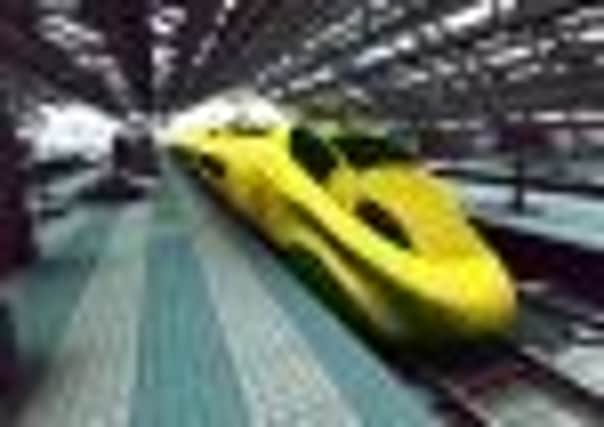Yorkshire starved of money for transport network


The new analysis of three years of investment shows only seven per cent of public spending went on transport-funded improvements in this region, leaving commuters facing queues on roads or overcrowded trains – while 49 per cent poured into London.
Business leaders warn that the Government’s drive to tackle the North-South divide is doomed to fail unless spending is distributed more evenly to fund vital projects such as the park and ride schemes in York and road improvements around the Humber ports.
Advertisement
Hide AdAdvertisement
Hide AdCampaigners insist the figures strengthen the case for the Government to press ahead with the £32bn high-speed rail network – High Speed Two (HS2) – which will slash journey times between Yorkshire and London by 2032, giving the region’s economy a multi-billion pound boost.
MPs have vowed to step up their fight for the region. The inadequacy of transport funding is one of the issues raised in the Yorkshire Post’s Fair Deal for Yorkshire campaign calling on David Cameron to deliver on his pledge to tackle the North-South divide.
David Begg, director of the Campaign for High Speed Rail, said: “These new figures demonstrate once and for all the dire need to re-balance investment in essential transport infrastructure across the UK. For too long Yorkshire has suffered as governments have had their head turned by London and the South-East.
“I hope this is the last we will hear from those who say we don’t need HS2, it is simply wrong for one region to receive nearly 50 per cent of all the money spent. Taxpayers in Yorkshire deserve a fair deal starting with HS2.”
Advertisement
Hide AdAdvertisement
Hide AdAnalysis of Treasury spending figures reveals in 2009/10 a total of £4.5bn was spent on transport in London and the South East – 46 per cent of the total spent in England and more than six times the £703m spent in Yorkshire.
Over the three years 2005/06, 2008/09 and 2009/10, the most recent data available, London and the South East received on average 48 per cent of total transport spending for England, compared with Yorkshire’s seven per cent.
It is recognised more needs to be spent in London and the South East because of the economic reliance on the capital and the number of people travelling in and around it each day. But it is also widely acknowledged that the balance is overly skewed, with commuters in Yorkshire and elsewhere suffering as a result. Delays on railways and roads cost businesses billions of pounds.
Before the General Election, business leaders in Yorkshire published a list of 29 transport schemes which they said must be delivered as a “minimum requirement”. Many have already been delayed or face having to wait until the end of the year to discover whether they will be get funding.
Advertisement
Hide AdAdvertisement
Hide AdCuts mean 45 schemes around the country are competing for a share of £700m for transport schemes between now and 2015.
Richard Kendall, head of policy at Hull and Humber Chambers of Commerce, said: “If the economy is to be rebalanced then Yorkshire and the North must get a fair share of funding, otherwise our growth will be held back by infrastructure that is unable to cope.”
Craig Whittaker, Tory MP for Calder Valley, said: “We don’t want favours, we want a fair deal and our fair proportion of spending. Until that starts happening the Government isn’t going to start closing the gap in the North-South divide.”
Angela Smith, Labour MP for Penistone and Stocksbridge, said: “Clearly this reinforces the case for a general re-drawing in the way transport funding is distributed.” Greg Muholland, Liberal Democrat MP for Leeds North West, said: “It is high time that this was addressed to give Yorkshire a fairer deal.”
Transport Secretary Philip Hammond said: “A high speed rail network would present a once-in-a-generation opportunity to redraw Britain’s economic map, bringing our major cities closer together.”